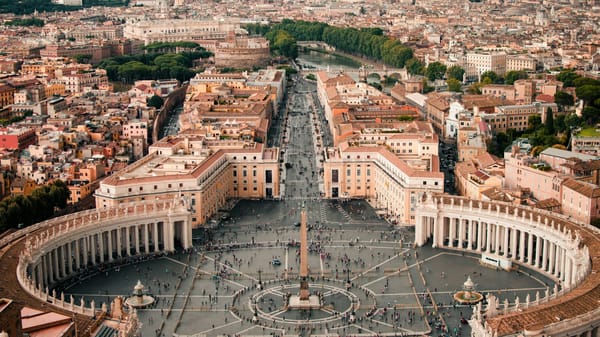AI, Money, and the Future of Art: Art as the Last Currency
Art is feeling, thought, love, time, emotion, resonance—experience crystallized in form. Against the future of soulless, fractionalized “art,” only meaning remains rare —Panu Syrjämäki, Editor-in-Chief, ART Walkway News

Key Takeaways: AI, Money, and the Future of Art
- AI disrupts scarcity:
Generative systems make production abundant, but authenticity and originality remain rare. - Money shifts roles:
From measuring utility to measuring distinction — value tied to uniqueness, not just skill. - Attention as currency:
In a post-scarcity world, visibility, reputation, and interpretation may outweigh cash transactions. - Two art worlds ahead:
- Open & abundant: AI-driven, circulating freely, measured in cultural resonance.
- Closed & exclusive: Financialized, where collectors chase the unreplicable.
- The paradox:
If money disappears elsewhere, art may be its last stronghold — because meaning is always scarce.
The Debate Over Money, AI, and the Future of Art
The idea that money could become obsolete in the age of advanced artificial intelligence has moved beyond science fiction and into serious debate. In most conversations, the disappearance of money is framed around material needs: food, housing, energy, and healthcare. But in the arts, where meaning and value are far less tangible, the implications run deeper and stranger. If artificial intelligence brings us closer to a post-scarcity society, what happens to art, and what happens to the role of money in art?
Why Money Matters in Art
We must first recognize why money exists at all. It organizes scarcity, facilitates trust, and provides a metric for value. In the art market, these functions are heightened. The price of an artwork is not merely an economic fact—it is also a cultural statement. To buy a canvas at auction for millions is to assert not only wealth but judgment, taste, and social position. Money operates as both measure and symbol.
Abundance and the AI Disruption
But when artificial intelligence makes production abundant, this logic begins to wobble. Already, generative systems can create compelling images, sculptures, and performances at negligible cost. The scarcity of technical mastery or aesthetic polish is dissolving. In such a world, what is left to price? If anyone can conjure up a masterpiece with a prompt, the notion of paying for beauty or originality loses force.
This is not the first time art has been shaken by new technologies. The invention of the printing press in the fifteenth century made images reproducible, threatening the uniqueness of illuminated manuscripts and hand-copied works. Photography in the nineteenth century was accused of destroying painting by automating representation. Later, digital reproduction raised similar questions about authenticity and aura. Each time, the market and the cultural system adapted. Original works gained symbolic value, while new mediums created new forms of art. We should expect a similar disruption with AGI: abundance in production, scarcity in originality, and a revaluation of what it means for something to be “authentic.”
Scarcity of Meaning
Art is not simply beauty. It is context, narrative, and embodiment. A Van Gogh print is common; a Van Gogh original remains priceless. Likewise, a performance that happens once, in a particular place, with a particular presence, cannot be replicated by machines. Even in abundance, uniqueness persists.
This persistence suggests that money will cling to art longer than it clings to other goods. It will shift from measuring utility to measuring distinction.
Beyond the Market: Attention as Currency
Some argue that artificial intelligence will make markets themselves obsolete, replacing price signals with real-time optimization of resources and attention. Applied to art, this could mean that critics, curators, and cultural algorithms distribute visibility rather than cash. The reward for the artist might no longer be a sale but an audience, no longer a collector’s check but a global reputation score. In such a system, the critic becomes more, not less, central. Without price as validation, interpretation and recognition become the currency of meaning.
We can also imagine barter systems mediated by artificial intelligence, where art is exchanged not for money but for experiences, collaborations, or reputation. A collector might not buy an installation, but offer access to another project in return. Value circulates, but outside the traditional boundaries of cash exchange. This is already visible in digital art communities where attention, influence, and community status outweigh traditional market sales.
Two Worlds of Value
However, to declare money dead in the arts would be naïve. The persistence of scarcity in unique works, the human desire for status signaling, and the entrenched structures of galleries and auction houses mean that financial systems will not vanish overnight. If anything, as AI-generated abundance floods the cultural space, the financial value of human-authored, embodied, and rare works may actually rise. The symbolic power of money will intensify around these surviving islands of scarcity.
Globally, this dynamic may split art into two worlds. One world will be open, abundant, AI-driven, where art circulates freely, measured in reputation and cultural resonance. The other will be closed, exclusive, and financialized, where collectors seek precisely those works that resist reproduction. Domestically, the effects will vary. Countries with strong public arts funding may adapt faster to post-monetary cultural ecosystems. In contrast, regions dominated by private collectors and market logic may resist, defending money’s role as the arbiter of value.
The Paradox Ahead
History shows us that each technological revolution destabilizes value systems but never abolishes them entirely. The press did not erase books; it multiplied them. Photography did not kill painting; it transformed it. Digital art did not end physical galleries; it created parallel worlds of value. AGI will likely follow the same paradox: destroying one form of scarcity while elevating another. Art will remain bound to scarcity—not of skill, but of meaning, embodiment, and uniqueness.
In the end, if money disappears from most areas of human life, art may be the last currency left.
ART Walkway News





